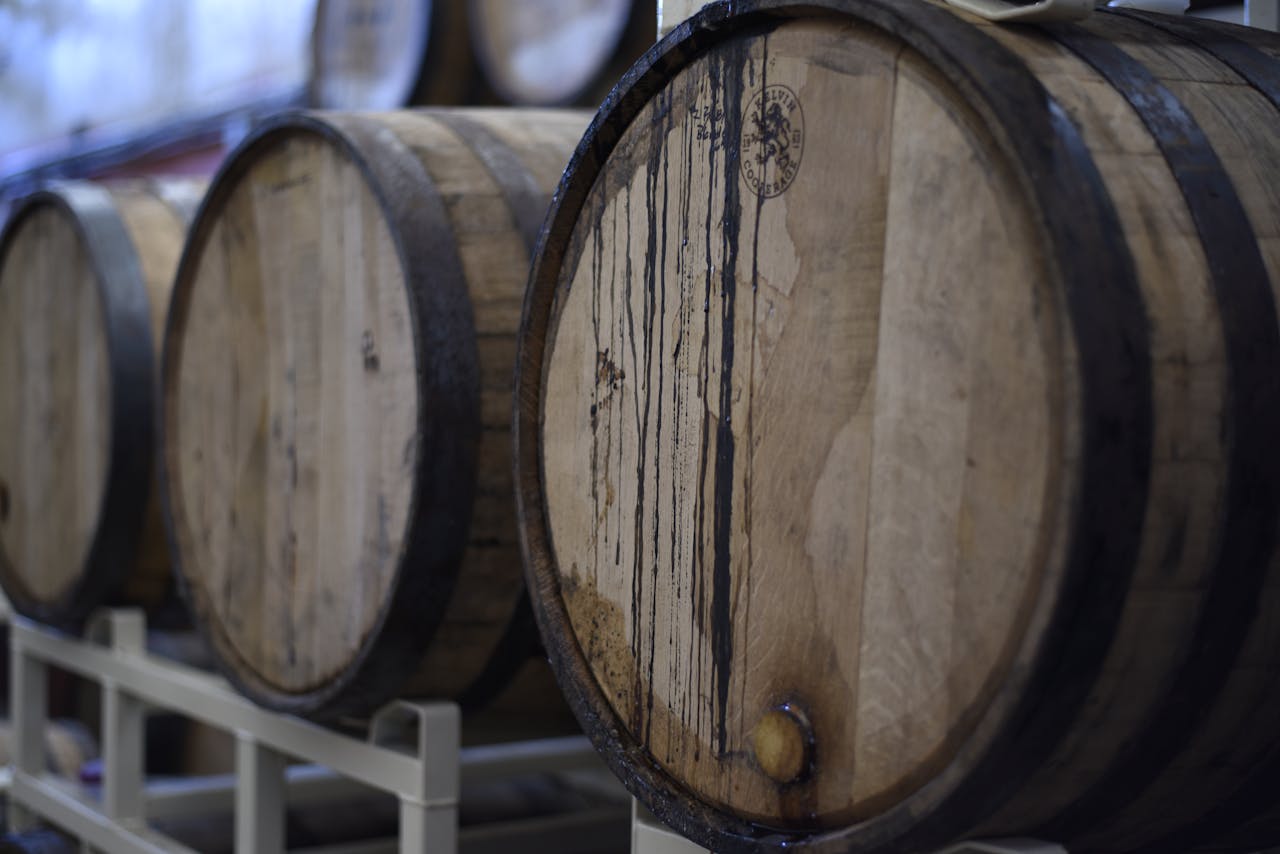
Amazake is a traditional Japanese beverage that has been gaining popularity not only in Japan but also around the world. This unique drink is known for its sweet and creamy taste, making it a favorite among those with a sweet tooth. But Amazake is more than just a delicious beverage; it also boasts a range of health benefits and has a long history and tradition in Japanese culture. In this article, we will delve into the world of Amazake, exploring its history, nutritional benefits, fermentation process, different types, and uses in Japanese cuisine. Get ready for a burst of perplexing information about this fascinating drink!
Key Takeaways
- Amazake is a traditional Japanese sweet drink made from fermented rice.
- It has been consumed in Japan for over 1,000 years and is often served during festivals and celebrations.
- Amazake is rich in nutrients such as vitamins, minerals, and amino acids, and is known for its digestive and immune-boosting properties.
- The fermentation process involves mixing cooked rice with koji (a type of fungus) and water, and allowing it to ferment for several hours.
- There are different types of amazake, including thick and thin varieties, and it can be used in a variety of dishes such as desserts, smoothies, and soups.
What is Amazake?
Amazake is a traditional Japanese beverage made from fermented rice. The name “Amazake” translates to “sweet sake,” which accurately describes its taste. However, unlike sake, Amazake is non-alcoholic or contains only trace amounts of alcohol due to the fermentation process. It is made by combining cooked rice with koji, a type of mold that breaks down the starches in the rice into simple sugars. The mixture is then left to ferment for several hours or overnight, resulting in a sweet and creamy beverage.
Amazake is often compared to other Japanese beverages like sake and shochu. While sake is made from fermented rice and has an alcoholic content, Amazake is non-alcoholic and has a lower sugar content. Shochu, on the other hand, is a distilled spirit made from various ingredients like rice, barley, or sweet potatoes. It has a higher alcohol content compared to both sake and Amazake. Each of these beverages has its own unique characteristics and uses in Japanese culture.
The History and Tradition of Amazake in Japan
Amazake has a long history in Japan, dating back over 1,000 years. It was first mentioned in historical records during the Nara period (710-794) and has been enjoyed by the Japanese people ever since. In ancient times, Amazake was often used as an offering to the gods during religious ceremonies and festivals. It was also consumed as a nutritious drink, especially during the hot summer months when it was believed to have cooling properties.
Amazake has deep cultural significance in Japan and is associated with celebrations and special occasions. It is commonly served during New Year’s festivities as a symbol of good luck and prosperity for the coming year. In addition, Amazake plays a role in traditional Japanese weddings, where it is served to guests as a gesture of hospitality and gratitude.
The Nutritional Benefits of Amazake
| Nutrient | Amount per serving | % Daily Value |
|---|---|---|
| Protein | 2g | 4% |
| Fiber | 1g | 4% |
| Calcium | 20mg | 2% |
| Potassium | 70mg | 2% |
| Vitamin B6 | 0.1mg | 6% |
| Vitamin B12 | 0.1mcg | 2% |
Amazake is not only delicious but also packed with nutritional benefits. It is rich in vitamins, minerals, and amino acids, making it a healthy choice for those looking to boost their overall well-being. One of the key nutrients found in Amazake is vitamin B6, which plays a crucial role in brain development and function. It also contains iron, which is essential for the production of red blood cells and oxygen transport throughout the body.
Amazake is also a good source of dietary fiber, which aids in digestion and helps maintain a healthy gut. The fermentation process of Amazake increases the bioavailability of nutrients, making them easier for the body to absorb. Additionally, Amazake contains probiotics, which are beneficial bacteria that support gut health and boost the immune system.
How Amazake is Made: The Fermentation Process
The fermentation process is what gives Amazake its unique taste and texture. To make Amazake, cooked rice is mixed with koji, a type of mold that contains enzymes that break down the starches in the rice into simple sugars. The mixture is then left to ferment at a controlled temperature for several hours or overnight.
During fermentation, the enzymes in the koji convert the starches in the rice into glucose, resulting in a sweet and creamy beverage. The length of fermentation can vary depending on the desired sweetness and consistency of the Amazake. Some prefer a shorter fermentation time for a lighter and less sweet taste, while others opt for a longer fermentation time for a richer and sweeter flavor.
The fermentation process of Amazake is similar to that of other fermented foods and beverages like yogurt, kimchi, and sauerkraut. Fermentation not only enhances the flavor and texture of these foods but also increases their nutritional value. The beneficial bacteria produced during fermentation help improve digestion, boost the immune system, and promote overall gut health.
The Different Types of Amazake and Their Uses

There are several different types of Amazake, each with its own unique characteristics and uses in Japanese cuisine. The most common type is “Kanbai Amazake,” which is made from white rice and has a smooth and creamy texture. It is often enjoyed as a standalone beverage or used as an ingredient in desserts like mochi or pudding.
Another type of Amazake is “Genmai Amazake,” which is made from brown rice. It has a slightly nutty flavor and a thicker consistency compared to Kanbai Amazake. Genmai Amazake is often used as a natural sweetener in cooking and baking or enjoyed as a warm drink during the colder months.
“Shirokome Amazake” is another variety made from glutinous rice. It has a sticky texture and a sweeter taste compared to other types of Amazake. Shirokome Amazake is commonly used in traditional Japanese sweets like yokan or dorayaki.
Amazake in Japanese Cuisine: Recipes and Pairings
Amazake is a versatile ingredient that can be used in a variety of traditional Japanese dishes. It adds a natural sweetness and depth of flavor to both sweet and savory recipes. One popular dish that incorporates Amazake is “Amazake Zenzai,” a sweet red bean soup served with mochi. The creamy and sweet Amazake complements the earthy flavors of the red beans and the chewy texture of the mochi.
Amazake can also be used as a natural sweetener in desserts like pancakes, muffins, and smoothies. Its creamy texture and subtle sweetness make it a healthier alternative to refined sugar. Additionally, Amazake can be used as a marinade for meats or as a glaze for roasted vegetables, adding a unique flavor profile to savory dishes.
When it comes to pairing Amazake with other foods and beverages, there are endless possibilities. Its sweet and creamy taste pairs well with fruits like strawberries, bananas, and peaches. It can also be enjoyed alongside traditional Japanese snacks like rice crackers or dried seaweed. For a refreshing twist, try mixing Amazake with sparkling water or adding it to cocktails for a unique flavor experience.
Amazake and Health: How it Can Help with Digestion and Immunity
Amazake is not only delicious but also beneficial for digestion and immunity. The fermentation process of Amazake produces beneficial bacteria known as probiotics, which help maintain a healthy balance of gut flora. These probiotics support digestion by breaking down food and aiding in nutrient absorption. They also help strengthen the immune system by stimulating the production of antibodies and enhancing the body’s natural defense mechanisms.
In addition to probiotics, Amazake is rich in dietary fiber, which promotes regular bowel movements and prevents constipation. The fiber in Amazake also helps regulate blood sugar levels, making it a suitable choice for those with diabetes or insulin resistance.
Amazake is also a good source of antioxidants, which help protect the body against oxidative stress and reduce the risk of chronic diseases like heart disease and cancer. The antioxidants in Amazake help neutralize harmful free radicals in the body, preventing cellular damage and inflammation.
Amazake and Beauty: Skincare and Haircare Benefits
In addition to its health benefits, Amazake also offers surprising benefits for skincare and haircare. The nutrients found in Amazake, such as vitamins B6 and E, help nourish the skin and promote a healthy complexion. Vitamin B6 helps regulate sebum production, preventing oily skin and acne breakouts. Vitamin E, on the other hand, is a powerful antioxidant that helps protect the skin from damage caused by environmental factors like UV radiation and pollution.
Amazake can also be used as a natural hair treatment to improve hair health and promote growth. The amino acids in Amazake help strengthen the hair follicles and prevent breakage. It also contains enzymes that help remove dead skin cells from the scalp, promoting a healthy environment for hair growth.
To use Amazake for skincare, simply apply it to clean skin as a face mask or mix it with other natural ingredients like honey or yogurt for added benefits. For haircare, massage Amazake into the scalp and leave it on for 15-20 minutes before rinsing it out with warm water.
Where to Find and Buy Amazake: Online and In-Store
Amazake can be found in various forms and flavors in Japan, ranging from ready-to-drink bottles to powdered mixes. It is commonly sold in supermarkets, convenience stores, and specialty shops throughout the country. Some popular brands of Amazake include Morinaga, Otsuka, and Marusan.
For those outside of Japan, Amazake can also be purchased online through various retailers. Websites like Amazon or Japanese specialty stores offer a wide selection of Amazake products that can be shipped internationally. It is important to check the ingredients and reviews before making a purchase to ensure the quality and authenticity of the product.
How to Make Amazake at Home: A Step-by-Step Guide
If you’re feeling adventurous, you can also try making Amazake at home. While the fermentation process may seem daunting, it is actually quite simple with the right ingredients and equipment. Here is a step-by-step guide to making Amazake at home:
1. Gather the ingredients: You will need cooked rice, koji, and water. The ratio of rice to water is typically 1:2.
2. Mix the cooked rice and koji: In a large bowl, combine the cooked rice and koji. Mix well until the koji is evenly distributed throughout the rice.
3. Transfer the mixture to a pot: Transfer the rice and koji mixture to a large pot and add water. The amount of water should be double the volume of the rice.
4. Heat the mixture: Place the pot over medium heat and bring the mixture to a simmer. Stir occasionally to prevent sticking.
5. Simmer for 2-3 hours: Continue simmering the mixture for 2-3 hours, stirring occasionally. The rice should break down and become soft, and the mixture should thicken.
6. Cool and strain: Once the mixture has thickened, remove it from heat and let it cool to room temperature. Strain the mixture through a fine-mesh sieve or cheesecloth to remove any solids.
7. Ferment overnight: Transfer the strained liquid to a clean container and cover it with a clean cloth or plastic wrap. Let it ferment at room temperature for 8-12 hours or overnight.
8. Enjoy: Once fermented, your homemade Amazake is ready to be enjoyed! You can drink it as is or use it in various recipes.
In conclusion, Amazake is a fascinating and versatile beverage that has a long history and tradition in Japanese culture. Its sweet and creamy taste, combined with its nutritional benefits, make it a popular choice among those looking for a healthy and delicious drink. Whether enjoyed on its own, used as an ingredient in cooking and baking, or incorporated into skincare and haircare routines, Amazake offers a burst of flavor and wellness.
So why not give Amazake a try and experience its benefits for yourself? Whether you choose to buy it from a store or make it at home, Amazake is sure to delight your taste buds and nourish your body. Embrace the perplexing world of Amazake and discover the wonders of this traditional Japanese beverage. Cheers to good health and deliciousness!
If you’re a fan of unique and delicious beverages like Amazake, then you’ll definitely want to check out this fascinating article on Flavorful Sips. They take us on a journey exploring the exotic flavors of mangosteen, a tropical fruit known for its sweet and tangy taste. Discover the many health benefits and culinary uses of this intriguing fruit by clicking here.



